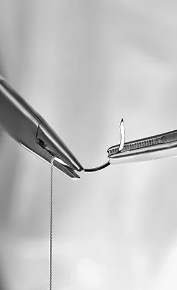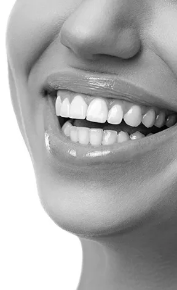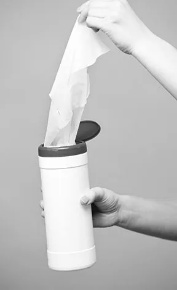Oral surgery
Improve bone defect repair
Join HANSAmed and Dr. Zeeshan Sheikh as we discuss Innovation and predictability, improve bone defect repair using Geistlich Bio-Oss® granules! The current long list of available natural and/or synthetic materials and surgical techniques makes the decision-making challenging with regards to what graft materials and surgical approach to use in oral surgery.
$$ $$
Integrating Prosthetically Guided Oral Implant Rehabilitation and Tissue Regenerative Therapy
Over the past decade, there has been an increase in oral implant treatments. With the advent of digital workflows and integration of guided surgical approaches, there has been a trend that shows when implants are planned, they are positioned where the bone is rather than where the restorative position dictates. These planned implants are usually in a more lingual or palatal position and when the restorations are completed, the patients may experience various complications such as food impaction and the inability to properly maintain their implant suprastructures. Additionally, the accumulation of bacteria and plaque leads to the potential of periimplant infection and prosthetic complications which may lead to the potential failure of the implant itself.
$$ $$
Management of Hard and Soft Tissues from both a Functional and Aesthetic Aspect
The long-term success of an implant-supported rehabilitation is strictly influenced by both the density and volume of available bone and the quality of soft tissues at the implant site Thoroughly analyzing the anatomic situation and well-planned treatment has become a requirement, because incorrectly planned and positioned implants may jeopardize long-term esthetic and functional prognosis. In addition, many types of biocompatible materials, autogenous hard and soft tissue grafts, and different surgical techniques have been developed. In this webinar we will review and discuss procedures to achieve a predictable and long lasting results with soft and hard tissue augmentation.
$$ $$
Peri-Implantite
De plus en plus de patients bénéficient d’un traitement implantaire. Une fois la réhabilitation prothétique supra-implantaire réalisée, il est important de garder un suivi et une maintenance chez nos patients afin de prévenir la survenue d’éventuelles complications implantaires et péri-implantaire. Malgré cela, des complications biologiques peuvent survenir. Ces dernières années nous ont permis de connaître de mieux en mieux les principes fondamentaux et les facteurs influençant les maladies péri-implantaires, de même les outils pour leur diagnostic et leur prise en charge. A travers ce webinar interactif nous verrons les différentes étapes stratégiques de diagnostic et de traitements de la péri-implantite afin que vous puissiez dès le lendemain les mettre en applications.
Reducing Risks in Implant Therapies
This webinar with Dr. Ronald Jung will provide a comprehensive overview of the important steps needed to reduce risks from planning to tooth extraction and implant placement with bone regeneration.
The aim of the lecture is to provide a comprehensive overview of the important steps needed to reduce risks from planning to tooth extraction and implant placement with bone regeneration.
Based on clinical complications and wrong decisions the lecture will present how to make the right decisions for handling of extraction sockets, alveolar ridge preservation and soft and hard tissue regeneration in esthetic implant therapy. The lecture will focus on how to improve implant dentistry in order to reduce the invasiveness of the therapy and will give you a lot of practical information for your daily practice.
Restoring an Implant - How Long Do You Wait?
You have invested a lot of time and money in courses on how to safely and accurately select and then place an implant, the surgical drill kit, an Oral Surgery / Implant motor system, handpieces and possibly a Cone Beam Scanner – but what about a technology that assists in determining a safe time to start a restoration? Every Implant heals differently - Osstell can help!
$$ $$
Ridge Preservation, Extration Socket Management
This webinar with Dr. Michael Glogauer will focus on the current gold standard for preserving alveolar bone at the time of extraction in order to optimize long-term implants therapy success.
This is Part 1 of a 2-part series with Dr. Glogauer. In order for implant therapy to be successful there is a need for adequate host bone in the proper position in three dimensions. However, the alveolar ridge is prone to resorption following extraction of teeth which results in inadequate bone volume and unfavorable alveolar ridge architecture which ultimately limits the successful placement of dental implants. Although immediate placement of dental implants is a successful form of therapy, it has been reported that implants do not adequately preserve the alveolar ridge. In this presentation we will focus on the current gold standard for preserving alveolar bone at the time of extraction in order to optimize long-term implants therapy success.
Shifting Paradigms in Oral Soft Tissue Regeneration
Learn about the increased momentum of using soft tissue grafting procedures at dental implant sites in the last 5 years with Dr. Daniel Thoma.
Soft tissue grafting procedures at dental implant sites gained momentum in the last 5 years. This is due to a more profound understanding that an optimization of soft tissue quality and quantity does not only enhance esthetics but is also critical for the maintenance of peri-implant health. Whereas autogenous grafts are still considered to be the gold standard, more recent scientific evidence hints into the direction of soft tissue substitutes. Soft tissue substitutes are not replacing autogenous grafts, but rather serve as an alternative with a major benefit of decreasing patient morbidity.
















